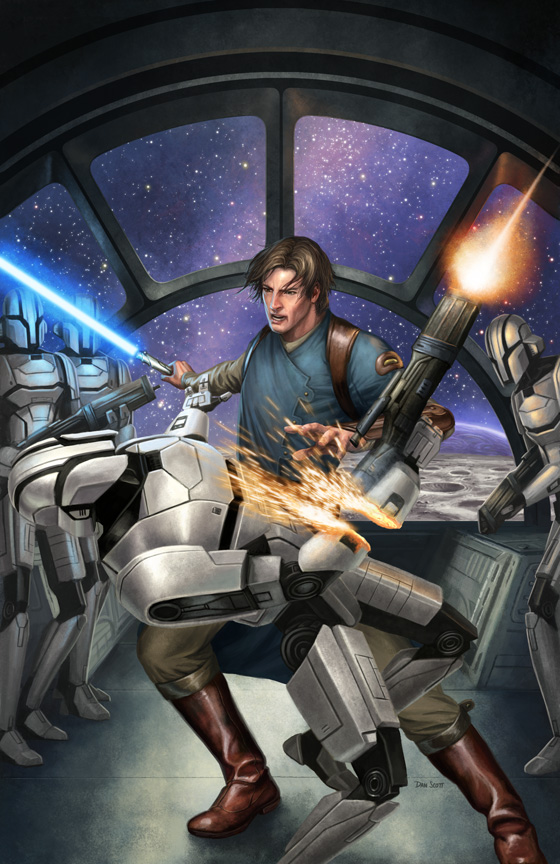

Having access to the vital Heal ability is great, but I found that some of the offensive skills of the Dark Side, like Force Scream or the destructive Force Storm, can make even more Light-focused runs go smoothly! Many party characters can eventually gain access to specialized Force abilities if you raise high enough influence with them, which is achievable by doing or saying things they react favorably to during the narrative. This helps determine the type of Force points you get when you level up, with some special abilities relegated to either the Light or Dark Side. The Exile earns Force alignment points vying towards the Light or Dark Side depending on actions and missions taken over the course of the game. Of course, one of the biggest draws of KOTOR and its sequel is in getting to gain power as a Jedi. The gameplay is certainly dated in terms of how stat numbers still determine fight outcomes, but otherwise, it is well-rounded and easy enough to get the hang of. Occasionally, you might get to hack (slice) a computer, remove mines, or repair and activate droids while out on the field. You control one person in the party at a time but can switch between the three active party members rather seamlessly should you need to. The game pauses whenever enemy targets are spotted to help you prepare your initial combat strategy, another returning gameplay feature from the first KOTOR. Like in the first game, you can equip weapons and armor pieces to each person and droid in your party, and you also collect or buy items as you advance the plot. They gain party members as they travel from planet to planet, and these party members have their own levels to gain and abilities to tailor to your liking. The Exile has the spaceship, the Ebon Hawk, at their disposal, no doubt a familiar vessel to fans of the first KOTOR. As you progress through the narrative, the Exile interacts with other characters while deciding on their next course of action, which in turn impacts how story scenes play out. Kreia sums up the moral ambiguity within the plot quite succinctly.Īs in the first KOTOR, players create their chosen Exile, placing points into various statistics and abilities as they gain experience and level up throughout the game. Obsidian’s mindset seems to carry over into The Sith Wars‘ gameplay, as many of the core mechanics seem to have survived the transition between developers. The title resembles its predecessor in both areas, which in turn helps give this sequel that distinctive Star Wars cinematic feel. Those who’ve played the prior BioWare title should feel at home with KOTOR II as soon as the sweeping opening credits begin since Obsidian clearly went with the “if it ain’t broke, don’t fix it” mindset when it came to the graphics and narrative presentation. I was quite impressed with the Switch port of the first Knights of the Old Republic, so I was eager to dive into the Obsidian-developed sequel.

Players take on the role of this Exile as they soon find themselves neck-deep in a fight that spans numerous worlds and could very well affect the fates of every living creature in the known universe. A former Jedi, a lone exile who lost their connection to the Force after following Revan and Malak in the Mandalorian Wars, wakes to a dangerously deteriorating situation on a mining colony in the Outer Rim. The last of the Jedi have gone into hiding due to a mysterious new threat that shows no qualms about killing entire planets to get at them, while the Republic is stretched far too thin and struggling to maintain even a semblance of order in a galaxy far, far away. The Sith Lords takes place only a few years after the events of the first Star Wars: Knights of the Old Republic, which have become known as the Jedi Civil War.

However, this initial base version of the RPG released on Nintendo Switch is more like a whisper fading into the emptiness of space rather than the reverberating roar it could so easily have been. Like the echoes often discussed in its plot, Star Wars Knights of the Old Republic II: The Sith Lords leaves an impression. Echoes are curious things: subtle, tiny whispers reverberating throughout the edges yet insistently powerful at the right frequency.


 0 kommentar(er)
0 kommentar(er)
